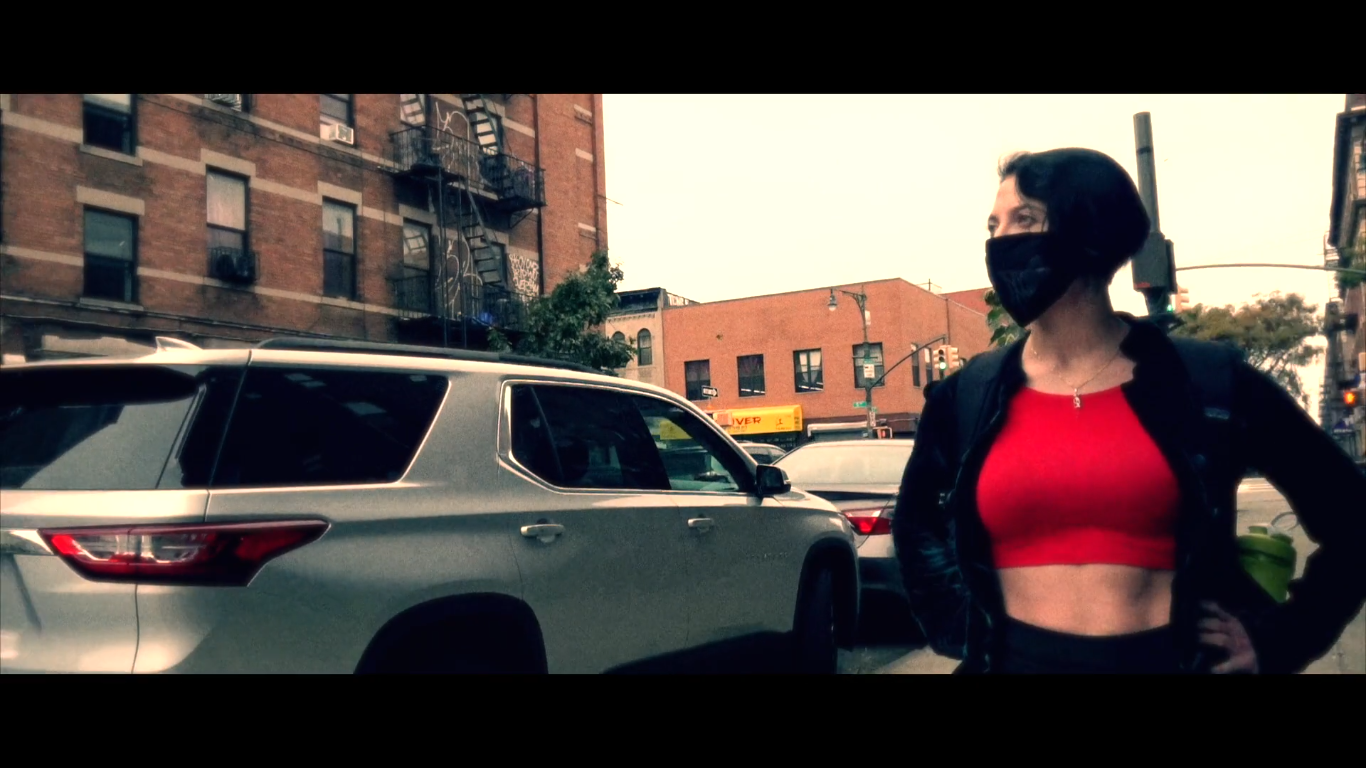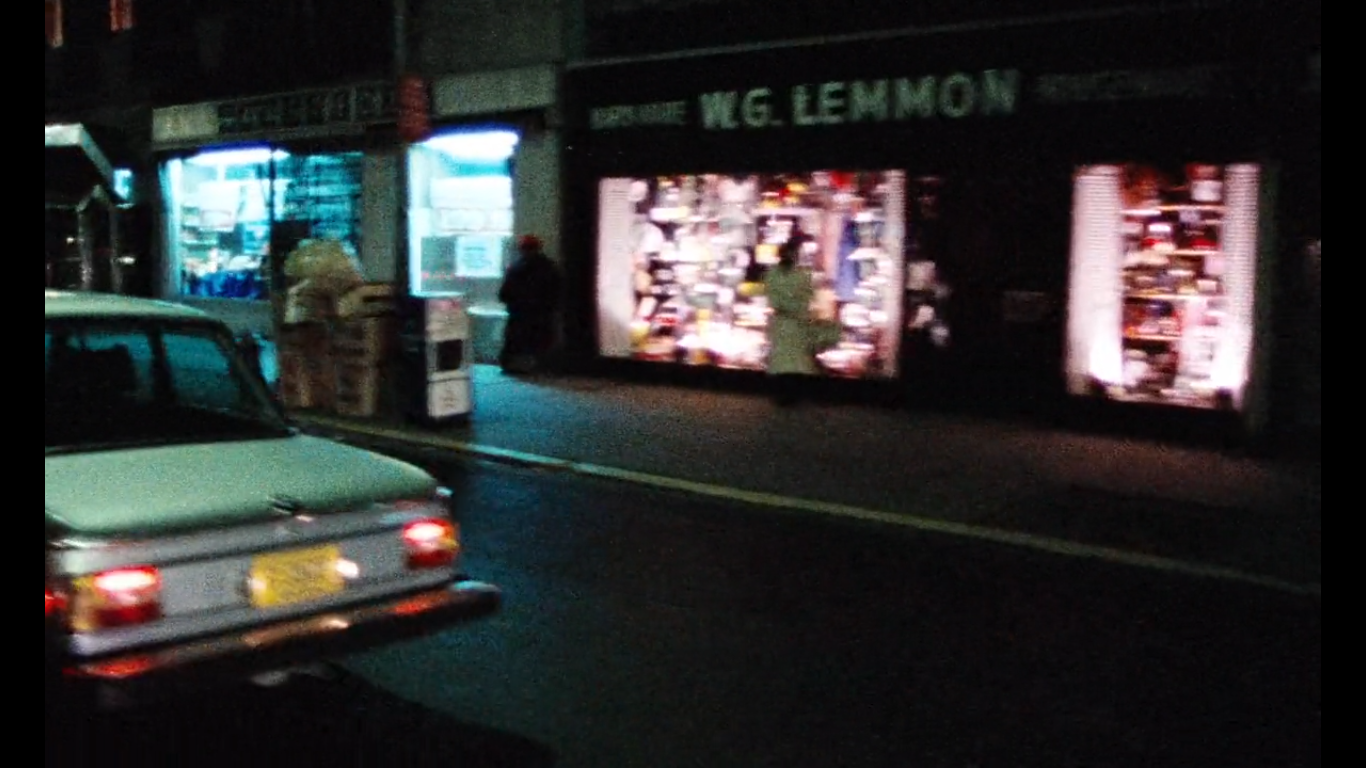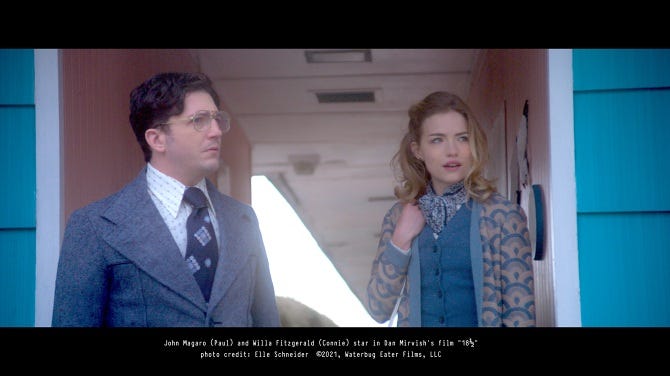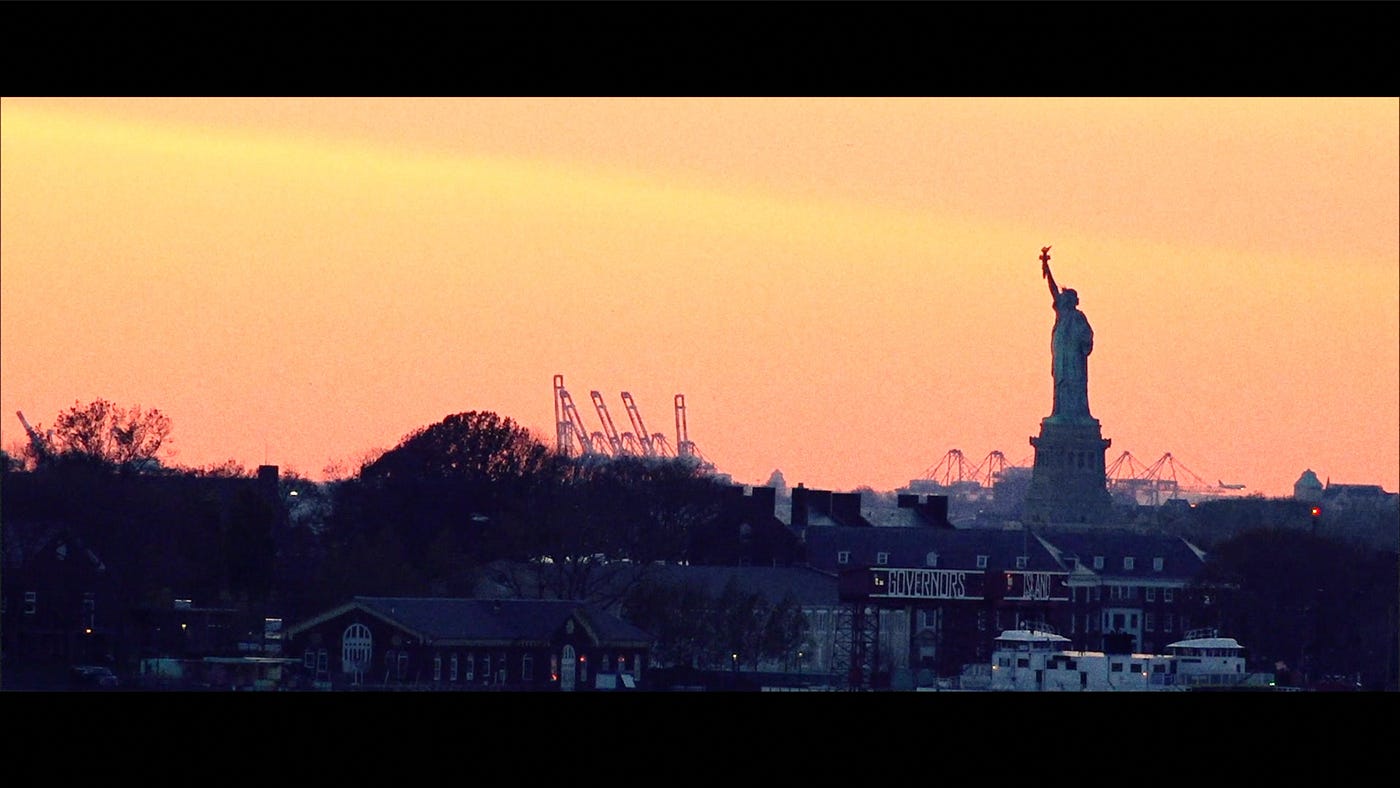An Analysis of two Conversation-driven Films: My Dinner with Andre’ and The Secret Society For Slow Romance.
I knew I’d have to watch My Dinner with Andre’ to understand all of the influences that went into making The Secret Society for Slow Romance. Sujewa Ekanayake, the auteur behind The Secret Society for Slow Romance, made Louis Malle’s film a ‘must watch’ for actress Alia Lorae before filming. That meant it was a must-catch for me.
I’m glad I watched it, because The Secret Society for Slow Romance is a variation on My Dinner with Andre’ in the purest classical music sense — Ekanayake takes structures and motifs from My Dinner with Andre’ and transforms them into something effervescent, sweet, and uplifting, despite dealing with some heavy subjects.
The two films have quite a bit in common. Both focus on lively conversation between New York storytellers covering a variety of topics over shared dinners. But the focus of ‘The Secret Society for Slow Romance,’ is filmmaking as a vehicle for connection and that is the driver of the conversations, while My Dinner with Andre’ is focused on the nature of our disconnectedness. At the heart of ‘The Secret Society for Slow Romance’ is a rejection of pessimism, which gives the film a big heart and an important message for these times. Its philosophy merges productivity and happiness and is a key difference that drives a number of the contrasting elements between the two films.
My Dinner with Andre’ explores the magical vs. the pragmatic — while The Secret Society for Slow Romance celebrates when the two are working in concert.
Opening Focus
My Dinner with Andre opens quietly, joining Wally Shawn (Wallace Shawn) on his journey through the streets of New York to an upper-scale restaurant to meet a man he’s been avoiding, Andre’ Gregory. He’s been avoiding Gregory because, in Wally’s eyes, it sounds like Gregory is unhinged. He sobs outside of cinemas, he talks to trees, and it’s obvious this isn’t what Wally signed on for. The opening scenes focus on Wally as he makes this journey — the city dwarfs his figure as he moves through it, and rather than interact with his environment, he seems to move almost in spite of it.

Wally has a look of defeated monotony about his life and his day — a thousand-yard stare of daily tasks and doings. His face barely registers recognition or even interest in the city surrounding him as he moves from street to subway to the posh interior of a high-class restaurant — he seems equally uncomfortable and discontent in all, shielded from the world in a slightly overlarge coat until he’s divested of it to enter into Andre’s realm. Wally’s voice-over is punctuated with the occasional sounds of the city around him, as he tells us about himself and his life.

By contrast, The Secret Society for Slow Romance uses its opening to pull us into a New York City even more magical than ours.

Thirteen seconds of the sounds of a New York radiator open up into Kevin Macleod’s “Tango de Manzana” scoring a tour of New York. The music choices help celebrate New York’s stunning vista.

Allyson (Alia Lorae) glides confidently through the city streets. She’s animated as she looks around herself, taking everything in. Unlike Wally, Allyson moves with the city, not in spite of it. She seems invigorated by the possibilities New York offers and is always animatedly taking in its sights with large eyes and open arms. In other moments in the film, she even dances, but here in the introduction, we see an Allyson who is fully engaged with her environment and able to live within and with her art.
Knowing the Characters
It’s long been a theory of mine (and others) that instead of wanting to converse, everyone’s just waiting to talk. Both of these films show a world in which that is NOT true — these are characters that are listening to each other. In My Dinner With Andre’, Wally spends the first two acts of the movie after his introduction to us via voice-over listening to Andre’s stories of his strange travels, experiences, and hallucinations. Wally also spends time as a detective, questioning Andre’ and his motives and thoughts to bring them to the surface, like a detective (which he said he’d do). It isn’t until the third act of the film that we get Wally’s opinions on what he’s heard and he starts to attack Andre’s ideas about the nature of action, habit, and the supernatural. While we as an audience are attached to Wally since his opening voiceover, we aren’t privy to his real thoughts and feelings on Andre’s fantastical tales until the end.
In contrast, The Secret Society For Slow Romance allows us to spend time with Allyson as she explores the city and dictates her thoughts on the world to her phone (a la Dale Cooper in Twin Peaks). While there is always a sense of impending conflict and tension in My Dinner with Andre’, the connectedness and earnestness of the characters in The Secret Society For Slow Romance advance their relationship.

It takes until the third act of My Dinner with Andre for the audience to see Wally’s true feelings about the conversation, while The Secret Society For Slow Romance’s opening conversation between Rene and Allyson shows a much healthier conversational dynamic where they are equally contributing to the conversation’s ebb and flow. This is one of those delightful instances of variation — a slow romance isn’t going to be possible if the characters aren’t initially intrigued by each other, and making them both equal participants is important to the believability of their later affections. While they both express skepticism at the other’s viewpoint, it is a skepticism entirely lacking malice. Instead, they are both amused and even delighted at such a differing view from their own, while Wally is visibly unsettled by some of the ideas that Andre’ is introducing him to. While Wally embarks on a line of questioning meant to differentiate his worldview from that of Andre’ and to later try to assert to himself that his beliefs are more fitting for this world, Rene and Allyson are more explorative and curious of what the other is saying without reservation. Rene and Allyson are seekers and are looking to see how the other can enhance their journeys.
I’d be remiss if I didn’t address another way in which the films are different in the realm of how they treat characters. The Secret Society for Slow Romance, while focused on Rene and Allyson primarily, also has a third character, the city of New York. While waiters, bartenders, and others serve the courses (acts) in My Dinner with Andre’ with little to no characterization in their dialog — in The Secret Society for Slow Romance, New York herself ushers us between scenes and Allyson serves up a true New Yorker’s delight — take out.
It’s also interesting to note that both Wally and Allyson are working on the fringes to discover their voices, while the more established Rene and Andre’ are both seeking something deeper and more meditative within and about their work.
The Structure of Mealtime
In My Dinner With Andre’, one of the ways we are pulled through the dinner is in the mechanics and process of its actual serving. These moments remind us how out of place Wally feels in the world, and this starts with Wally’s inability to order himself a drink at the bar. His discomfort in this place is extended when he has to ask for help with the menu (while Andre’ seems to be very familiar with the dishes and their preparation).

It’s very obvious that Wally is in Andre’s world (he even removes the protective barrier of his coat in order to enter this wild realm) — and while Wally appreciates comfort, this isn’t comfortable for him.
The moments in which those serving the meal intrude upon the conversation are telling — right after recalling a moment in which he was astonished at his poor treatment of his building’s doorman, Andre’ fails to recognize the waiter bringing his food. These are the moments where the real world encroaches on their cloistered conversation, and these sort of moments also help break the reverie of the conversation while simultaneously making the dinner seem more real to the audience. If you’ve eaten at a restaurant, you’ve had the experience of the mid-conversation food arrival.

The Secret Society for Slow Romance plays on this theme of meals helping to mark time. One of the twists within the variation is that of the pandemic as the characters are sharing in take-out which serves to tighten the world.

Since The Secret Society for Slow Romance also takes place over a greater period of time, there are other ways the film shows the passage of time (including spectacular sunrises, sunsets, and indications of holidays as they pass). Both use food to help usher in a new conversation, but because of its longer timeline, The Secret Society for Slow Romance has some other great ways to show how time is passing.
The Setting
New York City is a place full of possibilities. As far as characters go, she certainly has a great amount of depth! The Secret Society For Slow Romance is a movie that is focused on our ability to connect with others and the world around us, the movie spends a lot more time in New York City than My Dinner With Andre’ does.

This isn’t to say that My Dinner with Andre’ doesn’t include some quintessential New York moments or doesn’t feature the city, but since that film is discussing whether or not people should insulate themselves from the world, the fact that Andre and Wally are insulated from New York is an important thematic note. In the span of My Dinner with Andre’, we only spend around seven minutes in the city itself, instead of sequestered away from it in a fancy restaurant. Our only connections to the outside world are the waiter, and occasional flashes of others in the mirrors behind Wally and Andre’.

It’s also worth it to note that in a particularly impassioned speech, Andre’ talks about something he heard a tree expert say about New York City: ““I think that New York is the new model for the new concentration camp, where the camp has been built by the inmates themselves, and the inmates are the guards, and they have this pride in this thing that they’ve built — they’ve built their own prison — and so they exist in a state of schizophrenia where they are both guards and prisoners. And as a result they no longer have — having been lobotomized — the capacity to leave the prison they’ve made or even to see it as a prison.” And then he went into his pocket, and he took out a seed for a tree, and he said, “This is a pine tree.” And he put it in my hand. And he said, “Escape before it’s too late.””
By contrast, Allyson literally dances in the streets of New York City. When I first wrote about The Secret Society For Slow Romance, I called it a love letter to New York City. I felt very connected to her as a character and felt as though there was an entire plot that showed the city’s recovery after the pandemic. We venture with Allyson through empty subways and streets into increasingly busy ones as the city once again teems with life and is flooded with possibilities. Instead of relegating New York City to a construct, The Secret Society of Slow Romance celebrates New York as a character and one that we visit often.

My Dinner With Andre’ sets up its two main characters and where they are in their career, as does The Secret Society for Slow Romance, but the New York City of The Secret Society for Slow Romance is a different character from the setting known in My Dinner With Andre’. Not only is the city elevated to character status in The Secret Society for Slow Romance, but the city itself has also matured, grown, and become more nurturing (and safe) since the time of My Dinner with Andre’.
Another important difference to note about the setting is the passage of time — while My Dinner with Andre’ spins us into a tight dinner, The Secret Society For Slow Romance is about a longer period of time, during which our characters are growing, maturing, and changing in their views. At the end My Dinner With Andre’, I felt that Wally’s perspective had been impacted by his dinner, but I have no insight as to what Andre’ got from it, other than a good debate. Since The Secret Society For Slow Romance is a film that is about connectedness, it should be no surprise that we have a good sense of how both Allyson and Rene (and others) have been impacted by their conversations.
Money, Money, Money
I don’t want to make it sound like both of these films are obsessed with money, because they aren’t, but money, finances, and the impact of capitalism are not far from the subtext in either of these films. While neither film gets into a full-throated defense of a particular economy, both deal with the hard realities and impact that money and economic systems have on storytellers. Wally spends part of his opening monologue discussing his money woes and how he has to take on acting (and his girlfriend has to wait tables) because he can’t make money writing. Allyson ‘loves her day job’ but wants to move into being able to make films full time. Andre’ and Rene both contrast this by being established enough to spend their full days working on art.
Another difference in approach comes where Rene begins to suggest ways for Allyson to get to her personal goals. When she presents ideas and concepts that aren’t a perfect fit for his experiences, he starts to brainstorm with her how she can make it work. In all of the moments where Rene and Allyson share their goals and ideas, they both become excited and motivated to help and encourage the other, which is a beautiful and uplifting concept about what a slow romance is and entails.

Further, the storyline of The Secret Society For Slow Romance posits some ways in which the arts and artists could thrive under capitalism, but you have to be a member of the society to find out more.
“Money is just a way to track consumption and production.” -Rene in The Secret Society for Slow Romance.
No Nazis: None.
Nazis come up a LOT in My Dinner with Andre’, and The Secret Society For Slow Romance has time travelers. I know how and why Nazis and fascism are used in My Dinner with Andre’, but honestly I like more time travelers and zero Nazis in my movies.
Rumi-mills.
There’s a great section of The Secret Society for Slow Romance where they quote Rumi at each other and it’s adorable. My Dinner with Andre’ did not do this at all, and that’s probably a good thing — one of the reasons that The Secret Society for Slow Romance was able to do such things is the overall light tone of a rom-com will allow for it. It’s also notable that there isn’t the feeling that Rene and Allyson are trying to ‘beat’ each other at this game of quotes because they aren’t — instead, they just feel more invigorated by hearing what the other liked, and hearing a beloved quote spoken by a dear companion.
The Resolution
I think the largest point of contrast between the two movies lies in how they resolve. While both are dealing with the challenges of being a storyteller, of connecting, and how we can create meaningful relationships with and within our world, My Dinner With Andre’ ultimately leaves its larger questions and the conflicts between the characters unresolved. While Wally’s perspective about his world has been impacted by understanding Andre’s experiences and that’s evident in his closing monologue, it has not changed his view on the fantastic stories he heard, or his opinion on whether those experiences are necessary for someone to grow and be fulfilled as a person. His dinner with Andre’ has left him richer and more able to connect with the world around him, but ultimately his world will continue in its usual comforts as he cuddles into his electric blanket and tells Debbie about his dinner.
By the time The Secret Society For Slow Romance closes, we are confident that not only have Rene and Allyson changed, but how they interact with and see their world has been deeply impacted by their connected experience, and Allyson’s radiant smile at the end shows how deeply she’s been changed by her experiences with Rene. The film doesn’t just resolve for its characters but tries to paint a resolution for everyone, and implant that passion in the viewer that its two characters have.

My Dinner With Andre’ explores the question of whether theatre will reinforce feelings of alienation within its audience — and Wally and Andre’ can’t come to an accord as to what the purpose of theatre is. This is delightfully subverted in The Secret Society for Slow Romance where instead of focusing on the purpose of independent film in fostering connectedness, they instead focus on its usefulness as the solution to the problem. This subversion directly reinforces the overall philosophical rejection of pessimism.

The timeliness of both
It’s pretty crazy to consider that My Dinner with Andre’ is 40 years old because far too much of the conversation is far too applicable. I loved watching it and was easily immersed in the conversation, and the issues that Wally and Andre’ discuss: connectedness and the human experience, are still valid. The class issues that are brought up in the film are also still highly relevant, and if you’ve not seen it yet, I’d highly recommend it (Wallace Shawn even says inconceivable!).
The Secret Society for Slow Romance is going to feel modern. But it also has a lot in common with other forms of entertainment that have been created to challenge and uplift philosophical ideas. Within the first few minutes, we’re involved in a discussion of the Four Brahmaviharas, the ‘houses of the gods’ or the four virtues, in addition to suggestions on how to reduce stress and increase happiness. The Secret Society for Slow Romance is really about embracing what we have, seeing its potential, and loving the process. There’s a blueprint for using indie filmmaking as a vehicle for connection between people and a solution to some of society’s deeper woes. While My Dinner With Andre’ seeks to elevate a conversation, The Secret Society For Slow Romance seeks to inspire creation, connectivity, and intention.

In the Secret Society for Slow Romance, the discussion of the best things about America emphasizes not only what immigrants have brought, but also what was done as a society, cooperatively. This idea is an important one that we need right now. There’s also this gem of a quote, “Is America a Revolutionary society? Maybe. Technically, we are born of a successful revolution, the overthrow of a colonial power. But have we lost our revolutionary zeal? Have we grown lazy and comfortable? Is the rest of the world passing by us? Well, every civilization rises and falls, but we do have some pretty good Mexican food. Also Chinese…” As is fitting its philosophy, Allyson doesn’t linger on the thought that America could have grown comfortable and lazy and what that means — unlike Wally and Andre’, her thoughts don’t linger there, and instead move on to what is good, and what is possible.
Final Thoughts
Wally’s initial thoughts about Andre’ in My Dinner With Andre’ describe Andre’s reaction to “I could always live in my art, but not in my life”, while The Secret Society for Slow Romance shows us storytellers who live in their life and integrate their art within it — the movie emphasizes the connection between the life and the art instead of mourning the relationship for how it is. In the magical potential that New York City holds in The Secret Society for Slow Romance, art can be both their explorations of the truth of their world in addition to their escape from it. Allyson’s productive streams of movies indicate how she is constantly inspired by the stories in the world around her and is scrambling to capture every minute. This stands in stark contrast to Wally’s numb reaction to his time in the city and time talking about it during My Dinner With Andre’.
Both of these are stories about how storytellers connect — to their art, to each other, and to the world. Both engage in an examination of how those connections can be deepened or severed. Since The Secret Society For Slow Romance seeks to show a philosophy that can join both productivity and happiness, its overall approach is vastly different, and more oriented on results. And it has time travelers.
I loved the experiences that both of these films had to offer! Both will leave you feeling transported into interesting conversations between adept storytellers but will leave you with a different overall emotional timbre.






